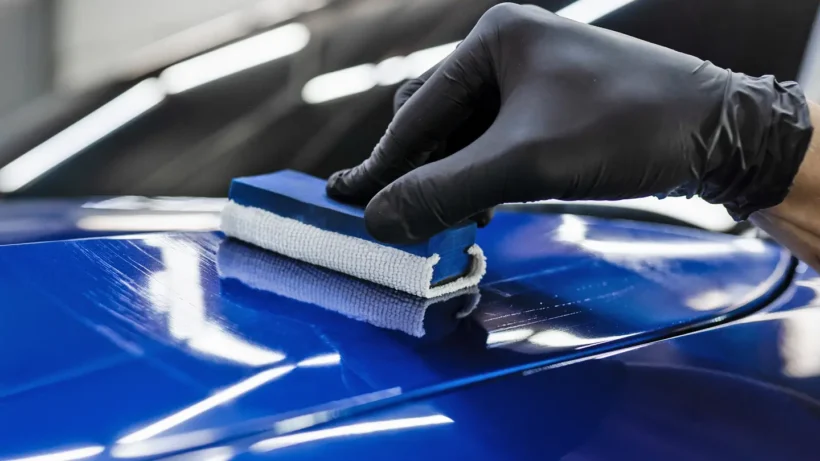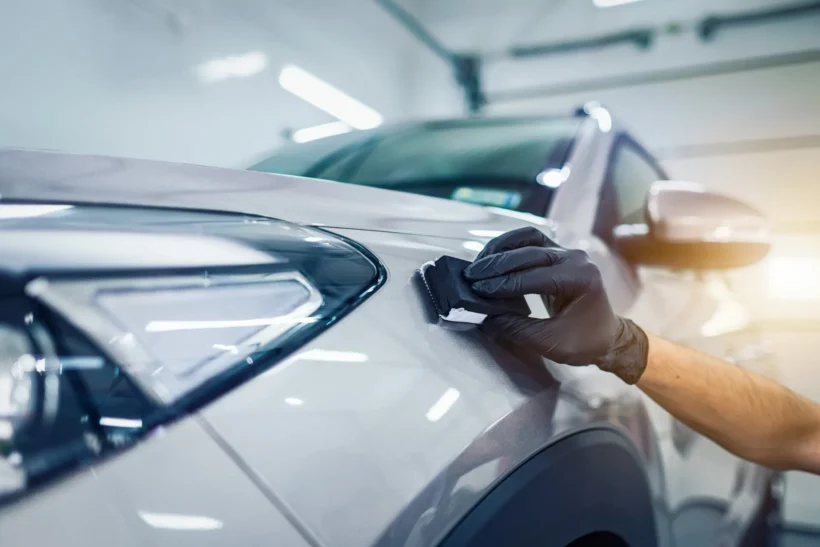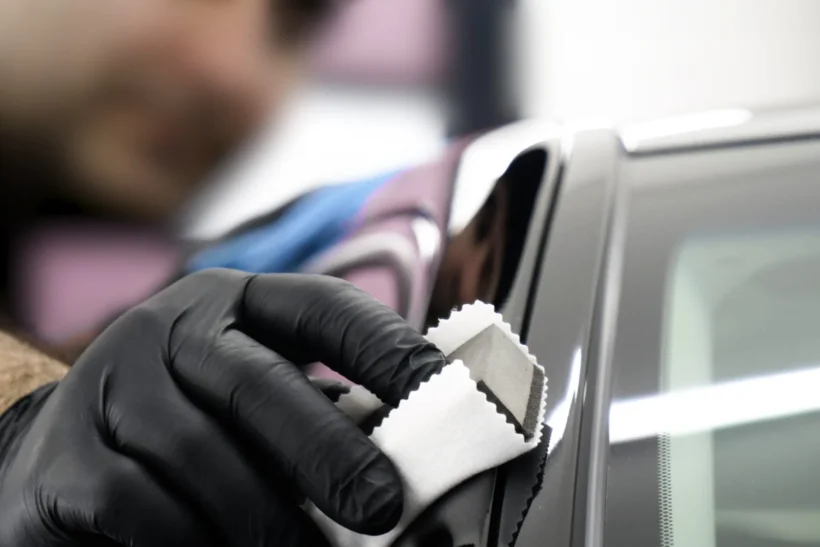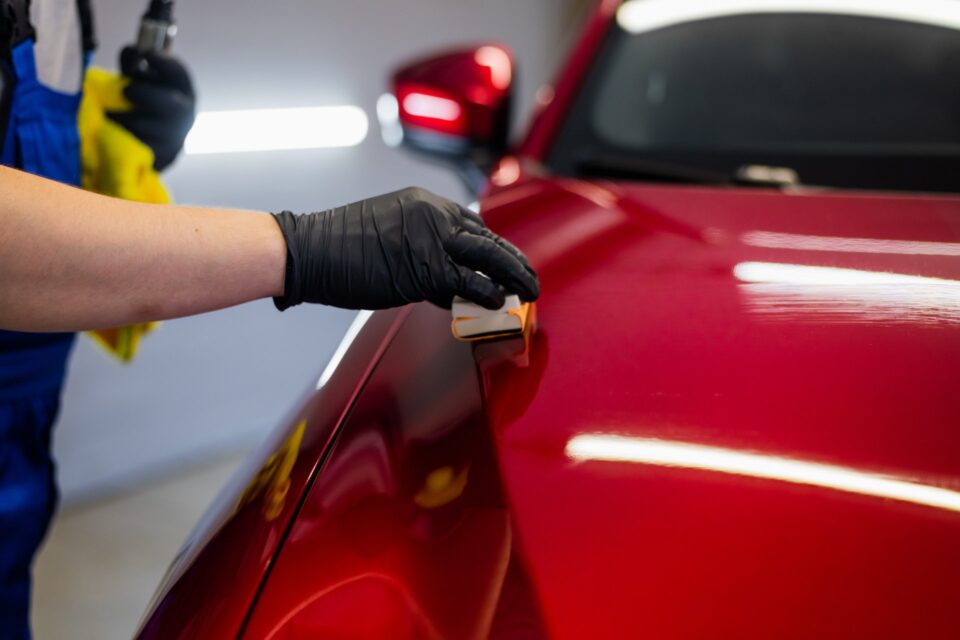Ceramic coating has emerged as a revolutionary product in the automotive industry, offering unparalleled protection for car exteriors. This nano-coating acts as a protective layer over your car’s paint, shielding it from various forms of damage while enhancing its aesthetic appeal. Unlike traditional protective measures, ceramic coating bonds with the paint on a molecular level, providing long-lasting durability. This guide dives deep into the world of ceramic coating, exploring its benefits, application process, maintenance tips, and how it compares to other protective coatings.
How it works

Ceramic coating works by providing a strong, protective surface to the car’s body, shielding it from external paint damage, while also enhancing the vehicle’s appearance with a glossy finish. Here’s a breakdown of how it works:
- Chemical Bonding: The primary ingredient in ceramic coatings is Silicon Dioxide (SiO2), derived from silica, which is a key component in glass. When applied to the car’s surface, the ceramic coating chemically bonds with the vehicle’s factory paint, creating a new layer. This bond is not merely on the surface but involves a sharing of electrons, making the bond extremely durable and long-lasting, unlike traditional waxes that sit on the car’s surface and wear off over time.
- Creating a Hydrophobic Surface: One of the hallmark features of ceramic coating is its hydrophobic (water-repellent) nature. The coating creates a smooth and even surface on the car’s exterior. When water comes into contact with this hydrophobic surface, it beads up and rolls off more easily, carrying dirt and grime with it. This effect not only helps in keeping the vehicle cleaner but also reduces the chances of water spots and stains adhering to the paint.
- Protection Against Environmental Factors: By forming a hard, protective layer over the paint, ceramic coatings protect against various environmental factors such as UV rays, acid rain, bird droppings, and tree sap. These elements can cause oxidation, fading, and staining of the vehicle paint over time. Ceramic coating acts as a barrier, significantly minimizing these damages.
- Enhanced Durability and Gloss: Unlike wax or sealants that need frequent reapplication, ceramic coatings are known for their durability, lasting anywhere from 2 to 5 years or more, depending on the product and maintenance. The coating also enhances the paint’s gloss, giving the car a shiny, wet look that is highly appealing.
- Scratch Resistance: While ceramic coatings are not scratch-proof, they do provide a level of scratch resistance. This means that minor scratches and swirl marks are less likely to occur as the coating provides a harder surface than the original paint.
Benefits of Ceramic Coating

Ceramic coating stands out for its exceptional benefits, making it a preferred choice for car enthusiasts and owners seeking to maintain their vehicle’s showroom shine and protect it from environmental hazards.
- Protection from UV Damage: The coating acts as a sunscreen for your car’s paint, preventing fading and oxidation caused by prolonged exposure to the sun’s UV rays.
- Chemical Stain Resistance: It repels acidic contaminants and chemical stains that can etch into the paint, preserving the car’s pristine condition.
- Ease of Cleaning: The hydrophobic nature of ceramic coating means water beads and rolls off the surface, taking dirt and grime with it, making cleaning a breeze.
- Enhanced Gloss and Shine: Ceramic coating enhances the paint’s gloss, giving your car a vibrant, reflective sheen that’s visually striking.
Preparation and Application Process
Applying ceramic coating requires meticulous preparation and attention to detail to ensure optimal results. Here’s a step-by-step guide:
- Surface Cleaning: Begin with a thorough wash to remove all dirt, dust, and contaminants from the car’s surface.
- Decontamination: Use a clay bar to remove any embedded surface contaminants that washing alone can’t eliminate.
- Paint Correction: Buff out any scratches or swirl marks since the ceramic coating will lock in the surface’s current state.
- Application of Coating: Apply the ceramic coating in a systematic manner, working on small sections to ensure an even layer. Use precise, overlapping strokes for uniform coverage.
- Curing Time: Allow the coating to cure for the recommended period, which can vary between products but typically ranges from 24 to 72 hours.
Caring for Your Ceramic Coated Vehicle

Maintaining a ceramic-coated car ensures the longevity of the coating and keeps your vehicle looking pristine.
- Regular Washing: Wash the vehicle regularly using a pH-neutral car shampoo to prevent dirt accumulation.
- Avoid Harsh Chemicals: Steer clear of cleaning agents with harsh chemicals that can degrade the ceramic coating.
- Soft Washing Tools: Use soft, microfiber towels or mitts to avoid scratching the coating during cleaning.
Ceramic Coating vs. Other Protective Coatings
To provide an exhaustive comparison between ceramic coating and other types of protective coatings, we’ve compiled an in-depth table detailing the features, benefits, and ideal use cases for each.
| Feature | Ceramic Coating | Wax | Sealants | Paint Protection Film (PPF) |
| Protection Level | High (against chemical stains, UV rays) | Low to Medium (primarily against water and dirt) | Medium to High (against UV rays and minor abrasions) | Very High (against scratches, chips, and stains) |
| Durability | 2-5 years | 1-4 months | 6-12 months | 5-10 years |
| Cost | High | Low | Medium | High |
| Application Process | Professional recommended; meticulous preparation required | DIY-friendly; easy application | DIY-friendly; requires moderate preparation | Professional installation required; complex application |
| Maintenance | Low (regular washing suffices) | High (frequent reapplication needed) | Medium (periodic reapplication recommended) | Low (washing and occasional wax can enhance protection) |
| Aesthetic Enhancement | High (enhances gloss and shine) | Medium (provides a glossy finish) | High (provides a glossy, reflective surface) | Medium to High (depends on the finish of the film) |
| Ideal Use Case | For enthusiasts seeking the best long-term protection and aesthetic enhancement | For those looking for an affordable, short-term solution | For drivers seeking a balance between cost and protection | For owners looking to protect high-impact areas from physical damage |
Conclusion
Ceramic coating offers a superior level of protection and aesthetic enhancement for vehicles, standing out as a valuable investment for car owners. By following the right application processes and maintenance practices, you can ensure your vehicle not only remains protected but also retains its showroom shine for years to come. Whether compared to waxes, sealants, or PPF, ceramic coating holds its ground as a premium choice for comprehensive vehicle care.

